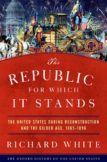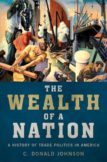Oxford University Press's Blog, page 249
June 10, 2018
Three new chameleon species from Madagascar
Madagascar is famous for the immense diversity of animals that are found nowhere else in the world. Among its most famous animals number the chameleons: both the largest (Parson’s chameleon, Calumma parsonii, or Oustalet’s chameleon, Furcifer oustaleti, depending on how you define “large”) and smallest (the dwarf leaf chameleon, Brookesia micra) chameleons are native to Madagascar. In fact, about half of the over 200 species of chameleons are strictly Malagasy.
The number of species known to science is quite steadily increasing; four new species were described in 2017 alone. Yet many chameleons are highly threatened, such as the Tarzan chameleon (C. tarzan) from a dwindling forest fragment in eastern Madagascar.
In April 2018, three more species were described from Madagascar in the Zoological Journal of the Linnean Society—and they are stunning.
Uetz’s soft-nosed chameleon, Calumma uetzi
 Image credit: A male of the new species Calumma uetzi in display colours by Frank Glaw (ZSM/LMU). Used with permission.
Image credit: A male of the new species Calumma uetzi in display colours by Frank Glaw (ZSM/LMU). Used with permission.Uetz’s soft-nose chameleon easily numbers among the most beautiful of Madagascar’s chameleons. Displaying males turn bright yellow along their sides with stripes of pink and purple, and a variety of colours on the head, from teal to aquamarine, yellow, salmon, and purple, with a black stripe running through the eye. Unimpressed, a female turns dark brown, almost black, with brightly contrasting yellow spots on her head that convey her vexation with his attentions.
This species was discovered on the Sorata massif in northern Madagascar during an expedition by some of the authors of the study in 2012. These remote forests are extremely poorly studied, and under extreme anthropogenic pressure, so that this species, although only just described, is probably endangered.
The species was named after Peter Uetz, who maintains the Reptile Database—an invaluable tool for researchers working on reptiles anywhere in the world.
Spear-nosed soft-nosed chameleon, Calumma lefona
In general, it is good to have a number of specimens when describing new species, but sometimes, despite best efforts, this is simply impossible. In these cases, variation within a species cannot be understood, but at least a characterisation of some of the morphology and genetic distinction can be done, and a species can still be described.
This was the case with one of the newly described chameleons, Calumma lefona: a single specimen was collected from northern Madagascar in 2010 that turned out to be a new species. This is evident from its genetic differentiation, but also from the shape of the skin flap protruding from its nose, the so-called “rostral appendage.” In this species, the appendage is long and pointed, and so it was named “lefona,” the Malagasy word for spear.
This spear-nosed chameleon is remarkable in another, less obvious way though: micro-CT scans revealed that there is a large, round hole in the roof of its skull. This kind of hole was already known from some related chameleons, but C. lefona has the largest. This hole sits right on top of the brain, and although its function is not yet clear, it might be involved in the internal clock of the chameleons, or in helping them thermoregulate.
Julia’s soft-nosed chameleon, Calumma juliae
 Image credit: The new chameleon species Calumma juliae from a small forest fragment in eastern Madagascar by David Prötzel (ZSM/LMU). Used with permission.
Image credit: The new chameleon species Calumma juliae from a small forest fragment in eastern Madagascar by David Prötzel (ZSM/LMU). Used with permission.The third species described in this new study was a small, unassuming, largely brown chameleon with bluish spots on its head. This new species, dubbed Calumma juliae after one of the people who helped discover it, is a relict of a lost age, and may be the most threatened chameleon in the world.
Curiously, this new species is closely related to another species from northwestern Madagascar—a species from which it is separated by some 400 km. It is a relict of what used to be large and extensive forests connecting these areas. Deforestation has ravaged Madagascar, leaving tiny islands of forest in some places that can be the last few square metres of once vast swathes.
One such small forest—calling it a copse would be more accurate—lies on the edge of one of Madagascar’s busiest roads, just outside the town of Moramanga. But this tiny fragment of forest is the only place where Julia’s soft-nosed chameleon is known to occur. To put it in perspective, a generously drawn perimeter of the forest is under 2 km in length; an area of 15 hectares. It is surrounded on all sides by rice paddies and invasive eucalyptus, and just last year, a piece of the forest was burned off. To put it bluntly, the species is in dire straits.
Over repeated searches for this chameleon over several years, a number of individuals were found, but every one of them was female. This problem is remarkably widespread in chameleons, and several species have been known only from females for long periods before a single male was ever found. Still, it raises serious concerns; captive breeding of chameleons is always tricky, but in this, perhaps the most threatened chameleon of all, no breeding projects could be started until males can be found.
Featured image credit: “When a male Calumma uetzi (left) meets an unreceptive female (right), the mood can quickly get aggressive. While the male puts on a show of colour, the female darkens and develops brightly contrasting patterns on her head, threatening the male with open mouth.” Copyright: Frank Glaw (ZSM/LMU). Used with permission.
The post Three new chameleon species from Madagascar appeared first on OUPblog.

The power of the religious imagination [excerpt]
Although often divided between believers and non-believers, or sacred and secular, spirituality is not dichotomous. Some believers accept the concept of God, but reject the literal existence of God. Some non-believers dismiss religious texts as fiction, but embrace the history and culture that comes with religion.
The below excerpt from Why We Need Religion examines these intermediate positions and explores how religious imagination helps us find connection and meaning in a mystifying world.
Mark Twain tells of the fascinating case of Reverend Thomas Beecher (brother of Henry Ward Beecher), who came from Connecticut to Elmira, New York (Twain’s summer hometown), to take charge of a Congregational church. Beecher served as pastor there for many decades, and became Twain’s friend.
“He had a fine mind,” Twain reports in his Autobiography. When he came to Elmira to take over the parish, Beecher was a “strenuous and decided unbeliever.” But, he reported to Twain, his upbringing required him eventually to come to believe in Christian doctrine, or he would never be happy or free from terrors. So, the atheist Beecher had accepted the parish confidently, knowing that he had made up his mind to compel himself to become a believer. Twain says that he was astonished by this strange confession, and found it stranger still that Beecher managed to pull it off. Beecher claimed that within twelve months of coming to Elmira, he had “perfectly succeeded in his extraordinary enterprise, and that thenceforth he was as complete and as thorough a believer as any Christian that ever lived. He was one of the best men I’ve ever known. Also he was one of the best citizens I’ve ever known.”
“The religious imagination has a powerful role in the construction of an unseen, meaningful world—one that structures life, even as it fails to deliver on its literal promissory notes.”
It’s hard to interpret this credulous compulsion, this self-imposed conversion. If we take Twain and Beecher at face value, then the conversion represents a kind of tour de force of the will-to-believe. But belief on demand seems, forgive the irony, hard to believe. This is an important issue for us, because we will be considering the possibility of religious belief or commitment, without satisfaction of truth requirements, and even in the face of truth failure.
There is full-on belief, without doubt. And there is complete disbelief. But there are also many fine-grained intermediate positions that need more exploration. The religious imagination has a powerful role in the construction of an unseen, meaningful world—one that structures life, even as it fails to deliver on its literal promissory notes.
Philosopher Jean Kazez writes, “I am a religious fictionalist. I don’t just banish all religious sentences to the flames. I make believe some of them are true, and I think that’s all to the good.” At her family’s religious feast, the Seder, she pretends there is a deity to be praised for various things. “I like pretending the Passover story is true,” she explains, “because of the continuity it creates—it ties me to the other people at the table, past years that I’ve celebrated Passover (in many different ways, with different people). I like feeling tied to Jews over the centuries and across the world. I also like the themes of liberation and freedom that can be tied to the basic story.”
Many people take a fictionalist approach to God. They accept the existence of God, but they do not really believe God exists. As philosopher William Irwin puts it, “They accept that God is love and that (the concept of) God has shaped human history and guides human lives, but when pinned down they admit that they do not really believe in the actual existence of such a God. Their considered judgment is that the existence of God is not literally true but is mythologically true.”
Many nonbelievers dismiss this kind of fictionalism as bad thinking, but many of these same nonbelievers accept the moral power of imagination. In his song Imagine, John Lennon famously entreated us to imagine “no countries,” “no religion,” “no possessions,” and a subsequent “brotherhood of man.” And Martin Luther King, Jr. invited us to project a “dream” into future reality, and make it so.
Imagination helps us find empathy for other people, by putting us in their shoes. It helps us envision an alternative reality where greater social justice exists. Dreaming our ideals helps us organize our daily lives and institutions to bring about those ideals. But, of course, the imagination is not intrinsically positive and affirmative. Nightmares are also dreams, after all. In contrast to the egalitarian dreams of liberalism, imagination-based xenophobia drives cultures to imagine the worst, and fear tears apart communities and fosters “us versus them” dynamics. So, the religious imagination is a double-edged sword, and we must try to ascertain which direction it is cutting.
Featured image credit: “White Tealight Candles Lit during Nighttime” by Zac Frith. CC0 via Pexels.
The post The power of the religious imagination [excerpt] appeared first on OUPblog.

June 9, 2018
When and why does Islamic law oblige Muslims to fast?
An important prophetic tradition maintains that “Islam was built upon five ‘foundations.’” The Five Pillars, (the profession of faith [shahadah], daily prayers [salat], almsgiving [zakat], the fast of Ramadan [sawm], and the pilgrimage to Mecca [Hajj]) blend the theological with the legal and represent the fundamental principles of personal and collective faith, worship, and social responsibility that unite all Muslims and distinguish Islam from other religions. Every year, Muslims across the world take part in the fast of Ramadan, taking place from mid-May to mid-June. In the following excerpt from Shariah: What Everyone Needs to Know®, John L. Esposito and Natana J. DeLong-Bas discuss why Islamic law oblige Muslims to fast.
Fasting is common in many religions, often used as a spiritual discipline designed to free people from a self- centered focus on their physical needs and appetites, or as penance. The Fast of Ramadan, the Fourth Pillar of Islam, occurs once each year during the ninth month of the Islamic calendar. Ramadan, the only month specifically mentioned in the Quran, is the month in which the first revelation of the Quran came to Muhammad.
Islamic law requires that in Ramadan, every Muslim whose health allows abstain from food, drink, and sexual activity from dawn to sunset. During the entire month, Muslims must emphasize religious reflection and prayer, performing good works and distributing alms to help the less fortunate. Fasting is gradually introduced to young children to help them prepare for the full fast when they reach puberty.
Before sunrise, Muslims awake to eat their first meal of the day, which must sustain them until sunset. The intent to fast must be present until the end of the day. Failure to maintain intent represents cause for an invalid fast. However, if a person forgets and eats while they should be fasting, a hadith (saying of Muhammad) declares that the fast is still valid if the eating was a mistake. If fasting was intentionally interrupted, the believer must make up for fasting days in their entirety.
At dusk, family and friends break the fast in the traditional manner established by Muhammad—with a glass of water and a few dates—followed by prayer. After prayer, they share in a bigger meal that often includes special foods only served during this time of year. Since Ramadan is a month devoted to achieving a deeper sense of interaction with God’s revelation, many go to the mosque for evening prayer, followed by special prayers recited only during Ramadan. Some will recite the entire Quran (one-thirtieth each night of the month) as a special act of piety. In addition, public recitations of the Quran or Sufi chanting are heard during the evening. The fast ends on the twenty-seventh day of Ramadan when Muslims commemorate the “Night of Power,” the time Muhammad first received God’s revelation. The end of the fast is marked by celebration of the major Islamic holiday called Eid al-Fitr, literally, the Breaking of the Fast.
In Islamic law, the discipline of the month-long Ramadan fast is intended to stimulate Muslims’ reflections on human frailty and dependence on God and thus to increase gratitude toward the Creator. Fasting also serves to increase self-control and self-discipline as well as compassion for those who often experience hunger so that one can identify more strongly with and help the less fortunate. Abstinence should also be accompanied by a conscious effort to avoid negative thinking and to embrace positive, proactive, ethical efforts to improve society and the members who live within it.
Exceptions are made for those unable to fast for either temporary or permanent reasons. Temporary reasons include issues such as illness, pregnancy, breastfeeding, or travel on a long and difficult journey. Permanent reasons include age and health conditions such as diabetes for which fasting would be detrimental. In modern times, exceptions to fasting may also apply to professional athletes in the middle of the sports season if their ability to perform, or even overall health might be negatively affected by lack of water, in particular. In each case, it is up to individuals to follow their conscience. Those with temporary conditions can make up the fast at a later time once the condition has been resolved. Those exempted due to permanent conditions are to feed two hungry people each day in keeping with the spirit of caring for the less fortunate.
Featured image credit: “Book, Quran, Islam” by Pexels. CC0 Public Domain via Pixabay .
The post When and why does Islamic law oblige Muslims to fast? appeared first on OUPblog.

History books for Dads [reading list]
More than 70 countries around the world celebrate Father’s Day each year on the third Sunday in June. Yet, despite its global reach, Father’s Day has historically been considered an afterthought to Mother’s Day.
In recent years, consumer surveys have shown an upward trend in Father’s Day gift-giving. According to the National Retail Federation, US Father’s Day spending in 2017 hit record highs: reaching an estimated $15.5 billion. This change could be related to nature of modern fatherhood: today’s dads report spending an average of seven hours per week on child care (nearly triple what fathers reported 50 years ago).
To celebrate Father’s Day, we put together a collection of books we think dads will love. If you have any reading suggestions for Father’s Day, please share in the comments section!

World War II at Sea: A Global History by CRAIG L. SYMONDS
Acclaimed naval historian Craig L. Symonds shows how and why the second world war was won by sea: offering the first global account of World War II’s naval operations.
Indian Wor ld of George Washington: The First President, the First Americans, and the Birth of the Nation by COLIN G CALLOWAY
George Washington presented himself as “the great father” to Indian people, while the Iroquois called him “Town Destroyer.” This is the first major biography of Washington the fully illuminate his complex relationship with Native Americans.
The Last Battle: Victory, Defeat, and the End of World War I by PETER HART
At the eleventh hour of the eleventh day of the eleventh month of 1918, guns fell silent. Told largely through letters and first-hand accounts, The Last Battle captures the often-neglected final months of World War I.
Armageddon and Paranoia: The Nuclear Confrontation since 1945 by RODRIC BRAITHWAITE
Tensions surrounding nuclear armament are on the rise. Armageddon and Paranoia presents a comprehensive guide to the history of nuclear warfare: from the beginning of the Cold War to present day.

The Republic for Which It Stands: The United States during Reconstruction and the Gilded Age, 1865-1896 by RICHARD WHITE
In this latest volume in the Oxford History of the United States series, two-time Pulitzer Prize finalist Richard White illustrates the conflicts and paradoxes of post-Civil War America—and invites readers to consider how these same challenges exist in America today.
Greater Gotham: A History of New York City from 1898 to 1919 by MIKE WALLACE
The long-awaited next chapter to the Pulitzer Prize-winning Gotham, Greater Gotham examines the history and culture of New York City from 1898 to 1919, detailing how New York grew into the financial capital of the world.
Creators, Conquerors, and Citizens: A History of Ancient Greece by ROBIN WATERFIELD
Broken into three acts, this comprehensive history travels through time to capture the Archaic, Classical, and Hellenistic eras of ancient Greece.
The Escape Line: How the Ordinary Heroes of Dutch-Paris Resisted the Nazi Occupation of Western Europe by MEGAN KOREMAN
Between 1942 and 1945, a group of ordinary citizens formed a network created to smuggle Dutch Jews and others targeted by the Nazis south into France, via Paris, and then to Switzerland. Using recently declassified archives, author Megan Koreman, herself the daughter of Dutch parents who were part of the resistance, details the history of what is now known as the “Dutch-Paris Escape Line.”

Clement Attlee: The Man Who Made Modern Britain by JOHN BEW
To most, Winston Churchill remains Great Britain’s greatest Prime Minister. In this new biography, historian John Bew challenges this notion, instead designating the title to Clement Attlee, Churchill’s successor, who launched a new era of political, economic, and social reform that would forever change Great Britain.
The Wealth of a Nation: A History of Trade Politics in America by C. DONALD JOHNSON
This new political history details the evolution of America’s trade policy, from the Revolution to the Trump era, with a critical focus on the political struggle between business and labor in measuring the wealth of a nation.
Featured image credit: “photo-of-father-and-daughter-running-at-the-park-853408” by Josh Willink. CC0 via Pexels.
The post History books for Dads [reading list] appeared first on OUPblog.

Performing for their lives: LGBT individuals seeking asylum
The UN Refugee Convention promises safe haven to individuals who, having crossed an international boundary, can prove a well-founded fear of persecution based upon one of five categories: race, religion, nationality, political opinion, or membership in a particular social group. Since its framing in 1951, the Convention has been revised several times – in 1967, 1969, 1984, and 2011 – to also include those fleeing war or political strife; however, the five original categories remain unchanged. Least well-defined of these categories, and most ambiguous among them, is ‘membership in a particular social group.’ This category was originally developed to build flexibility into the Convention in the event of unforeseen circumstances. Since the 1990’s, however, ‘membership in a particular social group’ has been the basis for asylum cases for women fleeing domestic violence and/or female genital cutting, and for LGBT individuals persecuted in their countries of origin for their non-conforming sexual or gender identities.
According to a recent report by the United Nations, violence against LGBT persons exceeds other forms of hate crimes. LGBT asylum seekers have reported physical as well as emotional abuse, shunning, extortion, assault, forced heterosexual marriage, forced participation in conversion therapy, and so-called “corrective” rape (Alessi et al. 2017; Shidlo & Ahola, 2013). Such acts of violence may be perpetrated with impunity by a range of actors, including families, community members, religious leaders, and state officials (Alessi, Kahn, & Chatterji, 2016; Alessi et al., 2017; Office of the United Nations High Commissioner for Human Rights, 2015). Given the severity of persecution, many LGBT individuals have been forced to seek protection in places such as Canada, the US, and countries in the European Union. To gain asylum in these countries, LGBT petitioners must not only prove a well-founded fear of persecution, they must also prove that this fear is based on their membership in a sexual or gender minority group and that they are, in fact, members of that group. Such claims may be made before a representative of UNHCR in a country of transit outside of the host country, such as Turkey, a common gateway to Europe, the US, or Canada. Alternatively, the petitioner may appear before an asylum adjudicator within the host country.
But how does one prove lesbian, gay, bisexual, or transgender ‘membership’? It must be remembered that these categories were constructed in the West. Thus, they may have very little relevance to individuals from societies where non-conforming expressions of sexual orientation or gender identity take on very different meanings. In many contexts, failure to conform with societal norms can drive sexual and gender minorities into hiding, or into “passing” as heterosexual or cisgender, in an effort to protect themselves from honor killings, communal violence, or police arrest. Paradoxically, once the LGBT individual is in the host country, asylum adjudicators may expect them to be “out and proud.” This can mean producing evidence that matches the adjudicator’s assumptions of how LGBT people look or behave (e.g., photographs showing erotic relationships with same-sex partners, postings on social media of participation in the local gay pride parade, or certificates of attendance at LGBT organizations), as if there is one way to be lesbian, gay, bisexual, or transgender.
 Headquarters of the United Nations High Commissioner for Refugees (UNHCR) in Geneva / Genève (Switzerland) by Jungpionier. CC-BY-SA-3.0 via Wikimedia Commons.
Headquarters of the United Nations High Commissioner for Refugees (UNHCR) in Geneva / Genève (Switzerland) by Jungpionier. CC-BY-SA-3.0 via Wikimedia Commons.Well-meaning immigration attorneys representing LGBT asylum seekers in their immigration hearings can enthusiastically urge their clients to produce this proof, whatever the emotional cost. They may probe their client’s most intimate moments, seeking lurid details of sexual encounters with same-sex partners because adjudicators may well be looking for such stories. They may encourage disclosures of sexual assaults, including childhood sexual abuse, in order to build their case. Given the state of decision-making, this may be perceived as necessary. And, indeed, it may be necessary. However, being “forced” to come out and to disclose past sexual abuse before they are ready can produce negative mental health consequences in LGBT asylum petitioners. Furthermore, these consequences may persist even after the asylum has been granted.
Interestingly, UNHCR’s Guidelines on International Protection, Number 9, published in 2012, explicitly states that “there is no requirement that members of the [LGBT] social group associate with one another, or that they are socially visible, for the purposes of the refugee definition.” Canada’ Immigration and Refugee Board released its guidelines on sexual orientation and gender identity expression in 2017, which includes a range of stereotypes—including expectations that sexual or gender minorities look or act in a “particular manner”—that should be avoided by adjudicators hearing LGBT asylum claims. Despite such encouraging developments, there is a long way to go before directives are implemented on the ground. This will require a fundamental shift in the hearts and minds of adjudicators so they may move beyond preconceptions of what LGBT looks like and consider instead how well-founded fear is experienced, day-by-day, by sexual and gender minorities living their lives in hostile contexts. Only then will immigration attorneys ease up on their clients and seek to balance legal needs with their client’s mental health and well-being.
Featured image credit: LGBT Colorful Rainbow Gay Pride Flag by Sharon McCutcheon. Public domain via Unsplash.
The post Performing for their lives: LGBT individuals seeking asylum appeared first on OUPblog.

June 8, 2018
Studying mass murder
In the twentieth century, 40 to 60 million defenseless people were massacred in episodes of genocide. The 21st century is not faring much better, with mass murder ongoing e.g. in Myanmar and Syria. Many of these cases have been studied well, both in detailed case studies and in comparative perspectives, but studying mass murder is no picnic. Scholars have also examined how conducting research, including ethnographic fieldwork, archival investigation, and oral history interviews, can affect the researcher in profound ways. Among a broader set of difficulties that obstruct research on this wretched subject, two stand out in particular: political constraints and psychological attrition.
Political constraints
All social research operates in a dense political field. Of all the political actors constraining research on mass murder, states stand out. They often have a vested interest in misrepresenting the truth, because for many, the memory of a genocide (or its denial), is part and parcel of their collective identity. States that consider themselves heirs to perpetrator regimes, such as Turkey, Russia, Indonesia, China, or Serbia, make great effort to influence the scholarship on episodes of mass violence. They deny access to archival collections and libraries, intimidate and prohibit them from conducting field work. (The opposite is also possible: governments may try to foster or manipulate research by funding politically useful research, by pushing for the establishment of academic chairs at home or abroad, or by offering scholarships.)
Having to contend with the taboos, restrictions, prescriptions, and outright threats of authoritarian regimes keeps scholars working on these topics under permanent threat. Researchers bold enough to travel into these societies to visit sites, uncover evidence, interview witnesses, and have got to fear the security services and intelligence agencies of these states. One consequence of this discouraging atmosphere is that, in general, less research is carried out on those instances and episodes of mass murder, an undesirable blind spot due to the importance of the events. (Some researchers ingratiate themselves with the authorities for privileged access.) A second consequence poses a methodological dilemma: due to such constraints, does one launch a sting operation, like undercover journalism? Or does one use informants, fixers, and mediators on the ground? Does one pay the possible interviewees for taking the risks?
We may not be willing or able to change our research topics, but we do need our colleagues and audience to be aware of these challenges.
Psychological consequences
There are significant emotional consequences of studying mass murder. All social research also operates in a dense emotional and moral field. As a general problem in the academy, involvement and detachment has been dealt with at some length, but the study of mass violence is particularly relevant from this perspective. Though a certain amount of passion and involvement can facilitate one’s commitment to the topic, it requires a great deal of detachment to sift through documents and memoirs containing very intimate details of killing. Detachment is even more challenging in ethnographic fieldwork and oral history interviews, as empathy can transmit to scholars the interviewees’ powerful negative emotions.
Since the beginning of the Syrian crisis, I began interviewing Syrians about their experiences with violence, as part of a large-scale oral history project we are launching in the Netherlands. Having interviewed about 80 survivors and eye witnesses so far, their emotions of anger, sadness, fear, survivor guilt, and anxiety has affected me irreversibly. These types of interviews can be an alienating and isolating experience: the more one is absorbed into the stories of the eye witnesses, the more one is also drawn into their emotions. As a general rule of thumb, I felt compassion when interviewing victims, and indignation when interviewing perpetrators. But the interviews left a mark long after I stopped recording. When one young woman from Aleppo told me that she was raped in an ambush and witnessed a beheading up close, I was aghast at that moment. Ever since, I have not mustered my courage to go over those particular interview transcripts and notes.
All in all, the risks of political threats and psychological attrition need to be taken seriously by academic institutions, journals, and colleagues. These constraints can produce setbacks and potentially lower productivity, even with appropriate self-care. We may not be willing or able to change our research topics, but we do need our colleagues and audience to be aware of these challenges.
Featured image credit: Flowers in a Khmer Rouge jail cell by alex.ch. CC BY 2.0 via Flickr .
The post Studying mass murder appeared first on OUPblog.

June 7, 2018
Improving care for the family and friends who care for cancer patients
Many individuals in the United States will receive a cancer diagnosis this year. Such a diagnosis is upsetting to those who receive it and overwhelming to those—relatives or friends—who love them. Cancer is rarely experienced in isolation.
Relatives and friends—who we call family caregivers—support their loved ones in many important ways: attending doctor visits, maintaining the household, sorting out insurance and billing, and even performing nursing tasks. Because of these and many other roles, caregivers commonly experience physical and emotional strain. They become the hidden patient—underscoring the impact cancer has on a caregiver’s own physical and emotional health. Not surprisingly, such decline can also negatively impact the patient.
Providing support to family caregivers can benefit everyone—caregivers, patients, and, very likely, the health care system. Yet, currently, caregivers often do not receive the support they need to care for the patient or themselves. Part of the problem is that it can be difficult to identify caregivers. Often, they do not easily identify themselves as caregivers, but rather see themselves as spouses, sisters, sons, or friends. Second, health care providers may not know the best way to support caregivers. They may even see their primary role as helping the patients. Third, hospital and physician practices typically do not have the resources to finance support to caregivers. Time to train or support a caregiver is not commonly covered by insurance. Fourth, there is limited availability of community or Internet resources for caregivers in cancer and they do not necessarily know how to seek support or have the time to do so.
Providing support to family caregivers can benefit everyone—caregivers, patients, and, very likely, the health care system.
The purpose of our article in Translational Behavioral Medicine was to share three existing evidence-based programs and tools that address the needs of caregivers for cancer patients. These include: (a) the FOCUS Program, tested for efficacy in prior randomized clinical trials and implemented in community settings by agency staff; (b) the Program for the Study of Cancer Caregivers at Memorial Sloan Kettering Cancer Center, which addresses the needs of caregivers in a large health care system; and (c) CancerSupportSource®-Caregiver, an online platform for distress screening and referral developed by the Cancer Support Community to assess and address caregivers’ needs.
The overarching goal of these programs is to support caregivers as recommended in health care and oncology to help ensure good caregiver and patient outcomes. These examples also highlight the importance of offering support through diverse channels—a National Cancer Institute-designated cancer center, the community, and the Internet—to overcome barriers to supporting caregivers. And, in doing so, this big tent of coverage has the potential to reach more caregivers in need.
Unfortunately, cancer will likely remain a reality in upcoming years, and be challenged by an expected silver tsunami, or growing number of older adults being diagnosed with cancer. Going forward, these efforts—and many others—must continue to be shared with the oncology community to improve care for caregivers in cancer. Efforts are also needed to assess implementation in diverse settings, among diverse groups (e.g., older or young-adult caregivers) and using diverse delivery modalities (e.g., hospital/practice-based, telephone, Internet).
The need to care for the family and friends who care for cancer patients is immediate and growing. To do so, our oncology community of clinicians, researchers, advocates, patients, and caregivers must prioritize working together to recognize, study, and debate the system and practices within which we work to improve outcomes for those in cancer, both patients and caregivers alike.
Featured image credit: Photo by benwhitephotography. CC0 via Unsplash.
The post Improving care for the family and friends who care for cancer patients appeared first on OUPblog.

Safe and supportive schools for LGBTQ-GNC students
Within its first month, the Trump administration revoked federal guidelines designed to promote protections for lesbian, gay, bisexual, transgender, queer or gender non-conforming youth (LGBTQ-GNC) public school students. This move received significant media attention, much of which focused on the challenges of growing up LGBTQ-GNC, and the unique role of schools as places that should be safe and supportive for all students. At issue is defining the rights of students to be protected based on LGBT-GNC identity or status. And yet these rights are regularly compromised through: harassment and victimization that is unchecked; unfair, punitive, and exclusionary discipline practices; and unequal access to supports, services, and curriculum that validate their identities and experiences.
The groundbreaking study, Hatred in the Hallways, documented pervasive human rights violations perpetrated against LGBT youth in US schools. More recently, through an international convening and report, The United Nations Educational, Scientific and Cultural Organization (UNESCO) firmly documented homophobic and transphobic violence as a global issue that has critical implications for positive development, health, and academic success of children and adolescence. The UNESCO report argued that bullying generally, and bullying related to sexual orientation and gender identity (SOGI) specifically, comprise a threat to the universal right to education established in the 1948 Universal Declaration of Human Rights by the United Nations. This groundbreaking report provided a comprehensive review of the international literature on SOGI-related bullying in schools and documented the disproportionate rates of bullying for LGBTQ-GNC youth in countries on every continent across the globe.
While these social and cultural norms and conventions impact the rights of all LGBTQ-GNC people, they are especially salient in relation to young people.
Although the landscape regarding human rights affordances, constraints, and abuses related to sexual orientation and gender identity (SOGI) is constantly in flux, any discussion of the SOGI rights of young people must take into account this larger global context. The rights of LGBTQ-GNC youth in countries where the expression of same-sex sexuality is criminalized are virtually non-existent; further, human rights violations against LGBTQ-GNC youth occur within most countries across the globe and are often justified by cultural and social norms and conventions regarding “acceptable or normal” definitions of sexuality and gender. While these social and cultural norms and conventions impact the rights of all LGBTQ-GNC people, they are especially salient in relation to young people. While several advances have been made in the last decade to advance the rights of LGBTQ-GNC people across the globe (for example see the 2006 Yogykarta Principles and the 2011 Human Rights Council’s resolution on LGBTQ-GNC rights) these documents rarely attend to specific SOGI rights of young people or put forth any particular considerations regarding children and youth (a notable exception is in relation to access to education).
Understanding intersecting forms of oppression—such as the ways that structural oppression related to gender and sexuality and its intersections with race, ethnicity, class, and religion affect young people, their parents, and educators in schools—is essential for designing and implementing effective processes, strategies, programs, and advocacy aimed at creating positive change within school contexts. Many of the SOGI-related inequities evidenced in schools can be traced, in part, to narrow definitions of masculinity and femininity, rigid frameworks regarding gender and gender roles, and hegemonic structures in schools that mark heterosexuality as not only compulsory but also the sole valid expression of sexuality. Other forms of structural oppression rooted in racism, religious, or social class bias, are intertwined with SOGI issues in schools through inequitable discipline practices, religious control of public education, or economic disparities across schools.
Because SOGI issues in schools are embedded within larger systems of oppression, it is critical that research, practice, and policy engage with social justice and anti-oppressive education frameworks. Such approaches bring to the fore the ways that power, privilege, and bias structure schools in ways that tacitly sanction a range of educational inequities such as bullying, access to resources and services, and safety for young people in relation to sexual orientation and gender identity. As we continue to do this work, it has become increasingly evident that the SOGI safe schools movement is “inextricably linked” to broader education justice concerns. It is critical for the safe schools movement to work with others through intersectional, multi-issue coalitions—at the nexus of research, policy and practice—to ensure that all students’ educational rights, regardless of social position, are upheld. This type of cross-issue organizing, advocacy, and research takes time and needs to be grounded in the principals of the worth and dignity of all people, and that ensuring the rights of specific groups expands the rights of everyone.
Featured image credit: Class by NeONBRAND. Public domain via Unsplash.
The post Safe and supportive schools for LGBTQ-GNC students appeared first on OUPblog.

French Anglicisms: An ever-changing linguistic case
English loanwords have been pushing their way into languages worldwide at an increasing rate, but no language has a history of national resistance as staunch as French.
In France where language is an affair of state, opposition to Anglicisms, fronted by the Académie française, is explicitly linguistic (Anglicisms are superfluous and faddish items which must be replaced by French words) and implicitly political (Anglicisms are imports from the hegemonic United States, and the donor status of English exists at the expense of French). Whether polluters or occupiers, they are nevertheless before all new words that augment the lexicon, often for the short term and sometimes for the long term.
The escalating global influence of English raises the issue of novel and deeper contact outcomes that go beyond well-known cultural loans (le Big Mac) and computer and Internet terminology (le big data). The latest period of vigorous contact beginning in the 1990s has its own complex linguistic characterization, including the four singular outcomes:
(1) A significant influx of very low-frequency Anglicisms
Global English has brought in a greater volume of loanwords, which largely accounts for the perception of “too much English.” However, frequency counts in one year of the daily Libération indicate that dictionary-unsanctioned Anglicisms correspond to numerous types but very few tokens (typically fewer than three). Measuring the lifespan of Anglicisms also shows that their usually short life provides them scant opportunity to replace or permeate the lexicon of French. Their brief presence is belied, however, by the lexical vitality they generate in the recipient language.
The escalating global influence of English raises the issue of novel and deeper contact outcomes that go beyond well-known cultural loans (le Big Mac) and computer and Internet terminology (le big data).
(2) A diversity of borrowing types
In this period of sustained virtual contact with English, French Anglicisms can be defined less homogenously than ever before. The following sample of recently borrowed items embodies the current phenomenon: serial dragueur “serial flirt” (patterned on serial killer), Dru «the» boucher (borrowed stressed definite article), toutou-sitting “doggy-sitting” (loanblend), flashcode “QR code” (false Anglicism), runnings (truncation of running shoes), e-réputation (borrowed prefix e-), etc.
(3) Reinterpretations and manipulations of loan materials
English words embark on another life cycle in French, which may be very different from their donor life. Changes are, in fact, a common pattern: the forms may change meaning, shift word class, become informal, supply emphasis, deliver humor, etc. Adjectival XXL, for instance, entered the 2014 edition of the Petit Robert dictionary with both the literal donor meaning of a clothing size (sweat XXL “XXL sweatshirt”), and the figurative recipient meaning outside of the clothing sphere, which is ubiquitous in the press (projet XXL “large-scale project,” hommes XXL “plus-sized men,” arrogance XXL “outsize arrogance”). Bilingual compounds represent a productive case of manipulation: they arise when an English compound is used as a model for coining new words in the recipient language. These compound Anglicisms provide patterns for open series of bilingual compounds in French (serial killer > serial buteur “serial scorer,” it girl > it coiffure “it hairstyle,” Watergate > Penelopegate).
(4) Beyond words: borrowing of English phrases
The current contact period with English is characterized by a non-negligible qualitative extension, from the word to the phrase (craquant, isn’t it? “cute, isn’t it?”). The scenario here is even more complex, for these phrases indicate that while they are borrowed as chunks, they can subsequently be revisited in original ways in French, as is the case with witty expressions détournées: no man’s hand < no man’s land to describe a skillful handball player; FR God save the green < EN God save the Queen).
These four patterns characterize the emergence of innovative lexical phenomena in a setting of virtual contact whose (French) community is not bilingual in English in any conventional way. French Anglicisms show the open-ended nature of the lexicon, and are testament to both the ephemeral nature of individual words and the replicable nature of borrowing. In ten years’ time, many of the currently circulating Anglicisms would surely have disappeared and new items and motives for borrowing would have emerged. English influence, far from debasing French, as is often claimed, contributes to its vitality, while serving functions such as providing short-lived neologisms, conveying linguistic humor, or fueling slang.
Featured image credit: “New Year 31/52” by Gauthier DELECROIX. CC-BY-2.0 via Flickr.
The post French Anglicisms: An ever-changing linguistic case appeared first on OUPblog.

June 6, 2018
Etymology gleanings: May 2018 [Part 2]
With one exception, I’ll take care of the most recent comments in due time. For today I have two items from the merry month of May.
The exception concerns Italian becco “cuckold.” I don’t think the association is with the word for “beak; nose.” Becco “cuckold” is probably from becco “male goat.” If so, the reference must be to the horns, as discussed in the previous post.
Engl. lug
There are several English words, spelled and pronounced as lug. Most often, an English word ending in g suggests borrowing from Scandinavian. Though this is not a “law,” the absence of an obvious Scandinavian etymon of a g-word usually poses a problem. As an example, I can cite Engl. log. Its origin is obscure, even though Old Icelandic lág (etymologically, “something laid”) has the same meaning. (The vowels don’t match: á designates long a, that is, ā, while o in log is short.) Perhaps the Normans who heard the Danish or Norwegian word and coined the attested verb loggiare “to cut into logs” reproduced what they heard “with an accent”; hence log. This is not even a conjecture, but what the French call jeu d’esprit (“a light-hearted flight of fancy”). Skeat risked connecting loggerhead with lág, but gave no comments. To emphasize our ignorance, I should add that unanimity about the origin of several English words pronounced as lag has not been reached either. Monosyllables like dig, big, bug, dog, rug, hug, fog, rag, and so forth are almost always obscure: they are too short to have a respectable pedigree.
Lug1 “to pull, pluck” is certainly from Scandinavian. In Swedish and Norwegian, we find lugga ~ lugge “to pull one’s hair” and lugg “forelock.” Engl. lug “flap, lappet” turned up in the fifteenth century. The sense “to drag a heavy object with great effort” looks like a derivative of this lug; hence also “a heavy object” and, figuratively, “blockhead; an uncouth, aggressive man.” The Scots word lug2 (usually in the plural: lugs) means “ear; lobe of the ear.” Not improbably, “lobe” was its original sense. It is rather shocking to admit that the ears and the forelock were primarily understood as objects fit for pulling, but compare “to tug one’s forelock” (a sign of extreme deference) and the phrase to take time by the forelock. A more humane interpretation will allow us to interpret lug as “an object protruding or hanging loose.” Attempts to connect lug and lobe via the intermediate form luw– should not be taken seriously: lobe is a borrowing from Latin.
 Enjoying her lugs. Image credit: “Adult Crazy Expression Face Female Fun Funny” by PublicDomainPictures. CC0 via Pixabay.
Enjoying her lugs. Image credit: “Adult Crazy Expression Face Female Fun Funny” by PublicDomainPictures. CC0 via Pixabay.Then there is lug3 “a rod or pole; a (now obsolete) measure of length.” It is anybody’s guess whether there is a connection between this lug and the verb lug “to pull.” The word has long since been written off as opaque. Below is part of a letter by T. Llechid Jones, published in Notes and Queries, vol. 155, for October 6, 1928, p. 243:
“…I wonder if the Old Welsh word llog, plural llogau, is a cognate, if not the origin of it [the English noun]. The Garreglwyd MS. 605, in the National Library of Wales, Aberystwyth, is a survey of a farm, called Gwenynog, in Anglesey, taken in May, 1618, by Hugh Owen, the translator, into Welsh, of A’Kempis’ ‘De Imitatione Christi,’ which was published in 1684. He gives the total measure as,—‘llogæ 64, llathenæ 13, paladræ 4; viz. 242 acres 74 perches.’ The last two of the Welsh denominations are mentioned in books bearing on such matters within my reach, but I can find no information about llog or llogas….”
When Celtic and English words are nearly or wholly identical, only meticulous research can answer the question about which language is the lender. As a rule of thumb, it can be accepted that the lender is the language in which the etymology of the word under discussion has been ascertained. But no one knows the origin of either lug or llog. In any case, lug4 “a large marine worm” may be of Celtic origin, so that Jones’s idea has some potential. The Century Dictionary says tentatively: “Perhaps from lug,” which is defined so: “Anything that moves slowly or with difficulty; something of a heavy, lumpish or sluggish nature.” This guess returns us to lug1 (“to pull, drag”). It is astounding that lug means, among other things, the same as slug! And yet slug is not related to slow, and neither of them is related to lug.
 This is a lugger in all its beauty. Image credit: Jugendwanderkutter “Kersten Miles” by sunflare. Public Domain via Wikimedia Commons.
This is a lugger in all its beauty. Image credit: Jugendwanderkutter “Kersten Miles” by sunflare. Public Domain via Wikimedia Commons.Still another Engl. lug (lug5) may be the first component of lugsail (a sort of square sail). “Probably from the verb to lug; the sail is easily hoisted by a pull at the rope attached to the yard. Or named from lugger, its apparent derivative, as if a ship furnished with lugsails; but cf. Dutch logger, which seems to mean ‘slow ship,’ from Dutch log ‘slow, East Friesic lug. (Doubtful.)” (Skeat). The other conjectures I have seen are similar. The phrase “named from its apparent derivative” refers to what is called back formation. Compare the verb sculpt, which is derived from sculptor, but it seems that sculptor is from sculpt, as reader is from read. Dutch dictionaries do not shed new light on lugsail, because Dutch logger is a borrowing of French lougre, which itself is a borrowing of Engl. lugger. The word does not mean “slow ship”! Case closed.
The above discussion is not unimportant from a more general point of view. When a short sound complex, especially a very short one, is endowed with multiple meanings, it is often extremely hard to decide how many different “items” we are dealing with. Perhaps several unrelated words have coalesced, but perhaps the same root produced dissimilar branches. Faced with such a vague nucleus as “to pull, pluck, drag (with a difficulty),” it is easy to obtain anything from “ear” to “a large worm” and from “an object dragged with force” to “blockhead.” Our correspondent wondered whether the Celtic god Lug(h) has anything to do with Engl. lug, whatever its meaning. No, nothing at all. Lugh was a god of many functions, but, most probably, when his name was coined, it signified “shining light.”
 And this is a slug: not so majestic but also beautiful. Image credit: Arion rufus by Guillaume Brocker. CC BY-SA 3.0 via Wikimedia Commons.
And this is a slug: not so majestic but also beautiful. Image credit: Arion rufus by Guillaume Brocker. CC BY-SA 3.0 via Wikimedia Commons.John and Jack
The question was about why Jack is the familiar form of John. By way of introduction, I may say that many such variants—Dick for Richard, via Rick; Bill for William, via Will; Bob, Rob, and Hob for Robert (h and r are especially prone to playing leapfrog), and Peggy, via Maggie, for Margaret—are truly puzzling. One needs a long story to get from Jacob to Jim. Old English had no sound designated by j in Modern English, so that we owe the final shape of John, James, etc. to French. With regard to Jack , the history was made clear by Edward W. B. Nicholson, who wrote numerous letters to the periodical The Academy and finally put them together, revised, augmented, and recast in the form of a densely written booklet The Pedigree of ‘Jack’ and Various Allied Names. London: Alexander and Shepheard (sic), 1892. 35 pp. His main thesis was that Jack, which surfaced in late Middle English, was not derived from French Jacques but that it comes from Jankin ~ Jankyn, a diminutive of Middle Engl. Johan, that is, John. The French name was derived from Latin Iacobus and has always meant “Jacob” or” James.” This interpretation looks plausible, even though it requires some phonetic legerdemain to produce Jon from Jankyn. However, if Margaret could beget Peggy, nothing is impossible in the realm of proper names.
 King John of England (1199-1216), known as John Lackland. Image credit: From Cassell’s History of England published in 1902. A picture of King John of England. Public Domain via Wikimedia Commons.
King John of England (1199-1216), known as John Lackland. Image credit: From Cassell’s History of England published in 1902. A picture of King John of England. Public Domain via Wikimedia Commons.Spelling Congress: An Aftermath
The first session of Spelling Congress took place on May 30, and work on putting together a proposal for revising English spelling has begun. I’ll keep informing our readers about the progress of the Reform.
Featured Image: Jack of all trades. Featured Image Credit: “Man Office Businessman Business Multitasking” by SerenaWong. CC0 via Pixabay.
The post Etymology gleanings: May 2018 [Part 2] appeared first on OUPblog.

Oxford University Press's Blog
- Oxford University Press's profile
- 238 followers



